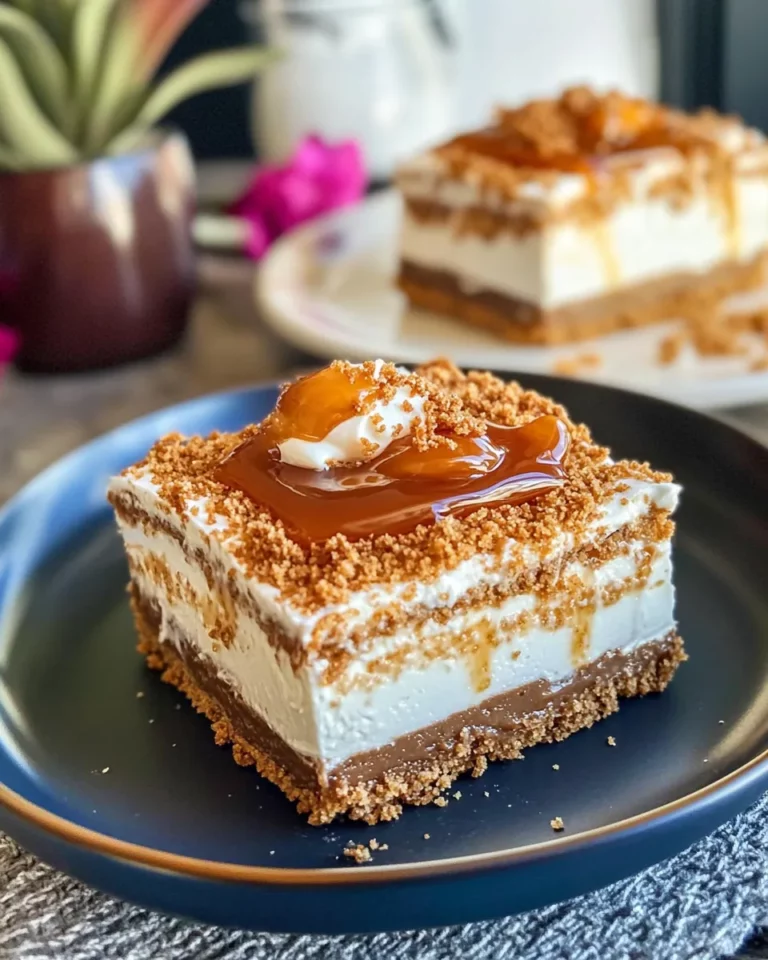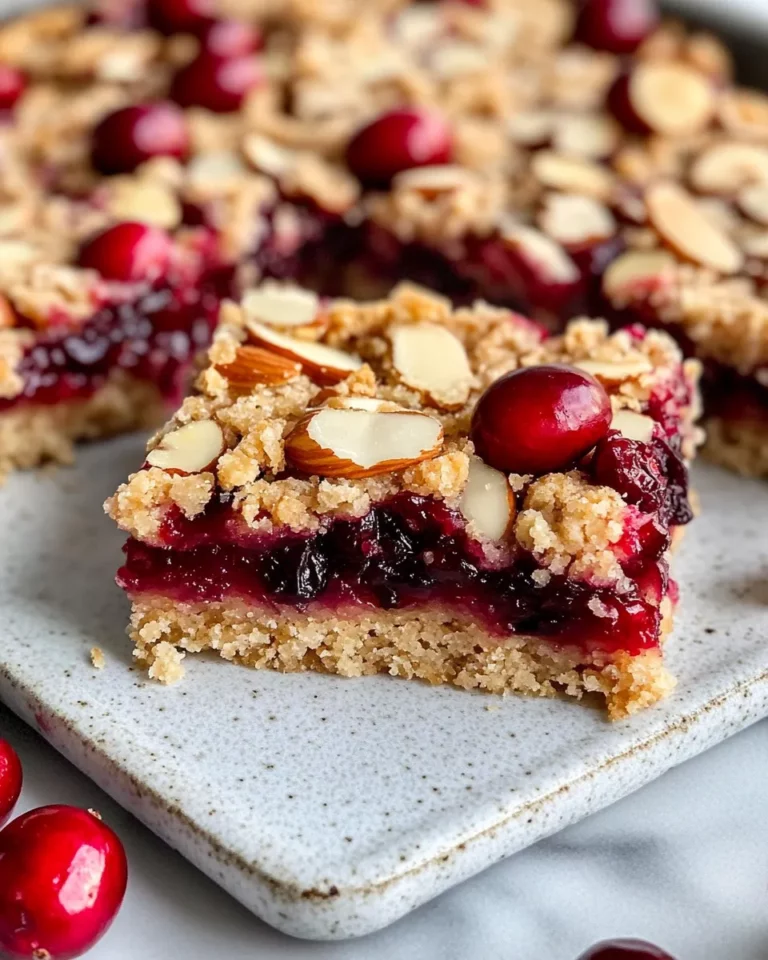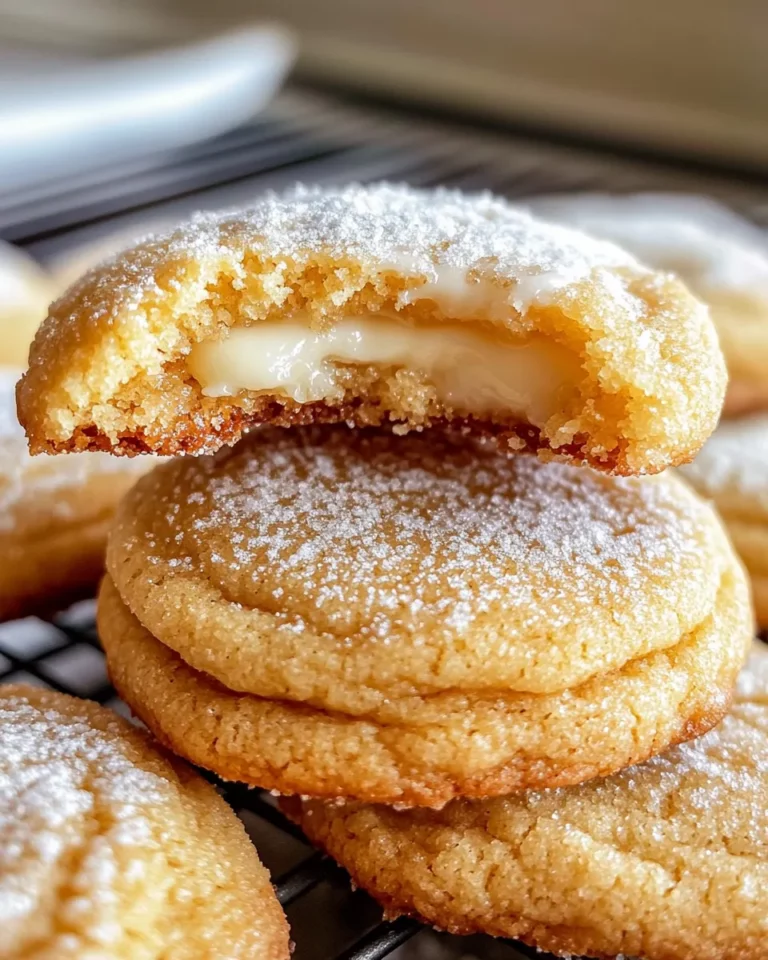Pastis de Nata (Portuguese Custard Tarts)
There’s something utterly irresistible about Pastis de Nata (Portuguese Custard Tarts). These delicate, golden pastries with their crisp, flaky puff pastry shells and creamy, slightly caramelized custard filling have captured the hearts and taste buds of food lovers around the world. Whether enjoyed with a sprinkle of cinnamon or a dusting of powdered sugar, these tarts are the perfect blend of textures and flavors that make every bite an experience. Today, I’m sharing a straightforward recipe featuring just one sheet of puff pastry and simple pantry staples, so you can bring a little slice of Lisbon right into your kitchen.
Why Cooks Rave About It
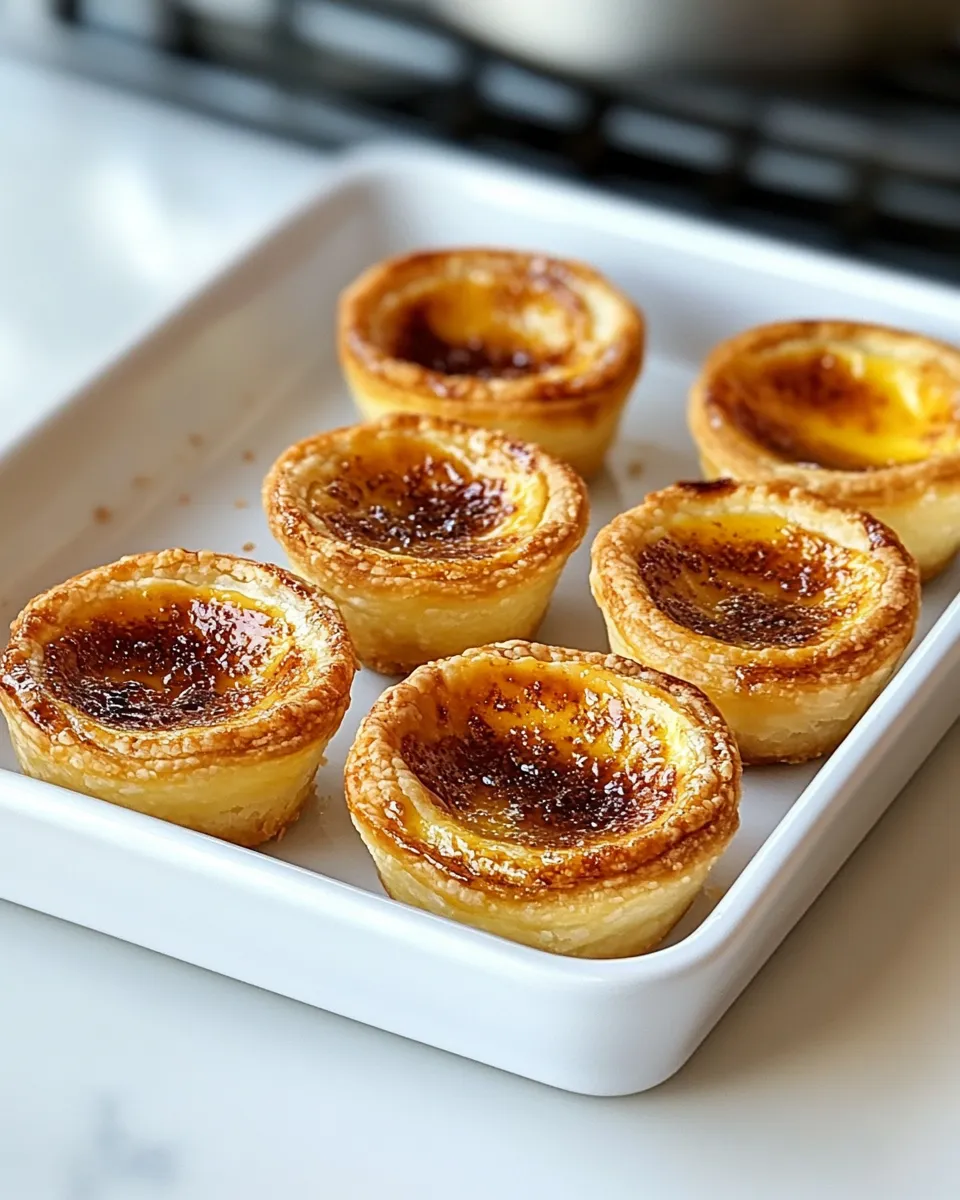
Pastis de Nata (Portuguese Custard Tarts) stand out because they perfectly balance richness and lightness. The crisp, buttery puff pastry contrasts beautifully with the smooth, sweet custard that boasts hints of lemon zest and cinnamon. Cooks love them for their simplicity — the ingredients are minimal, but the technique and timing create magic. Plus, they’re incredibly versatile as a breakfast treat, afternoon pick-me-up, or elegant dessert.
The custard filling is luscious but not overly sweet, making it a crowd-pleaser. The caramelized spots on top add a subtle depth and a touch of smokiness that make each tart unique. And the best part? You don’t need to make puff pastry from scratch; a store-bought sheet works perfectly, saving time without sacrificing flavor.
The Ingredient Lineup
- 1 sheet of puff pastry – The buttery base for the tarts, providing that flaky, golden crust.
- 50g all-purpose flour – To thicken the custard filling, giving it a silky texture.
- 250g sugar – Sweetens the custard; granulated sugar works best.
- 350ml milk – The main liquid component for the custard, lending creaminess.
- 85ml water – Helps dissolve the sugar and blend the custard ingredients.
- 6 large egg yolks – Provide richness and the custard’s signature golden color.
- 5ml vanilla extract or essence – Adds a warm, aromatic note.
- 1 cinnamon stick – Infuses subtle spice and warmth into the custard.
- Zest of 1 lemon – Brightens the custard with fresh citrus flavor.
- Oil for greasing cups or tray – Prevents sticking and helps create crisp edges.
- Cinnamon powder or powdered sugar – For sprinkling on top after baking, enhancing flavor and presentation.
Gear Checklist
- Muffin tin or tartlet tray: To shape the tarts and hold the puff pastry cups.
- Mixing bowls: For combining ingredients and whisking the custard.
- Whisk: Essential for blending eggs and liquids smoothly.
- Saucepan: To cook the custard mixture gently without curdling.
- Zester or fine grater: For extracting lemon zest.
- Rolling pin (optional): To slightly roll out the puff pastry if needed.
- Brush (optional): For oiling the tin or brushing the pastry edges.
- Cooling rack: To cool the tarts evenly after baking.
Pastis de Nata (Portuguese Custard Tarts) — Do This Next
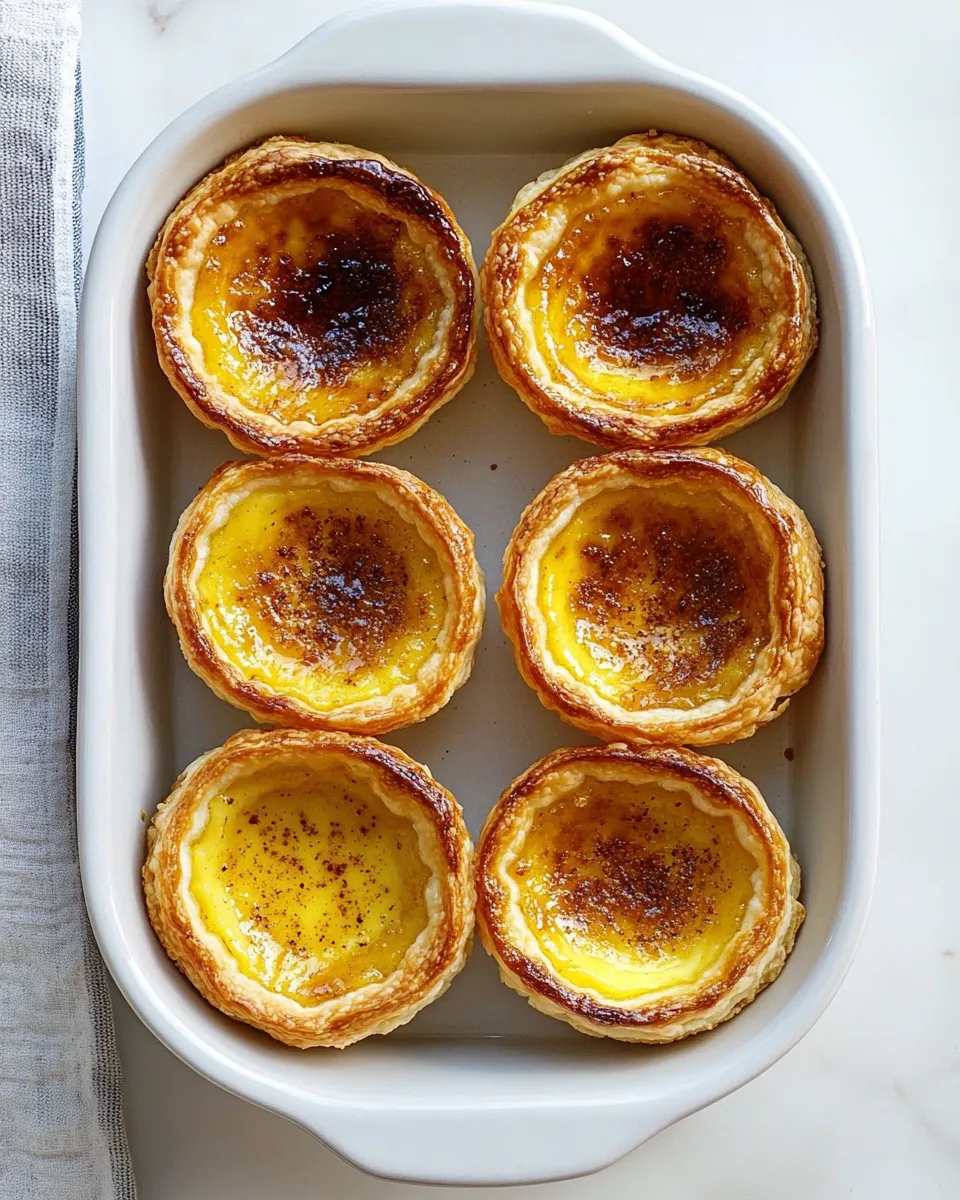
Step 1: Prepare the Puff Pastry Cups
Preheat your oven to 220°C (430°F). Lightly grease your muffin tin or tartlet tray with oil. Unroll the sheet of puff pastry onto a lightly floured surface. If needed, gently roll it out to about 3mm thickness. Cut the pastry into circles slightly larger than your muffin cups (about 10cm in diameter). Press each pastry circle into the cups, pushing down and up the sides to form little bowls. Place the tray in the fridge while you prepare the custard.
Step 2: Make the Sugar Syrup
In a medium saucepan, combine 250g sugar and 85ml water. Stir over medium heat until the sugar dissolves completely. Bring the mixture to a gentle boil and cook for about 3 minutes without stirring, until it thickens slightly into a light syrup. Remove from heat and set aside.
Step 3: Infuse the Milk
In another saucepan, pour the 350ml milk. Add the cinnamon stick and lemon zest. Warm the milk over medium heat until it is just about to boil, then remove from the heat. Let the spices steep in the hot milk for 10 minutes to extract all the lovely flavors.
Step 4: Whisk the Egg Yolks and Flour
In a mixing bowl, whisk the 6 egg yolks until smooth. Gradually add the 50g flour and continue whisking until fully incorporated and no lumps remain.
Step 5: Combine and Cook the Custard
Remove the cinnamon stick and lemon zest from the milk. Slowly pour the warm milk into the egg yolk mixture, whisking constantly to prevent curdling. Then, pour this mixture back into the saucepan. Add the sugar syrup and 5ml vanilla extract.
Cook over low to medium heat, stirring constantly with a wooden spoon or heatproof spatula. The custard will thicken after about 5–7 minutes. Don’t let it boil; once it coats the back of the spoon, it’s ready. Remove from heat immediately.
Step 6: Fill and Bake
Pour the custard filling evenly into the prepared puff pastry cups, filling each about 3/4 full. Bake in the preheated oven at 220°C (430°F) for 15–18 minutes, or until the pastry is golden and crisp and the custard has developed those signature dark spots on top.
Step 7: Cool and Serve
Allow the tarts to cool in the tin for about 5 minutes before transferring them to a cooling rack. Serve slightly warm or at room temperature. Just before serving, sprinkle with a little cinnamon powder or powdered sugar for that authentic finishing touch.
Quick Replacement Ideas
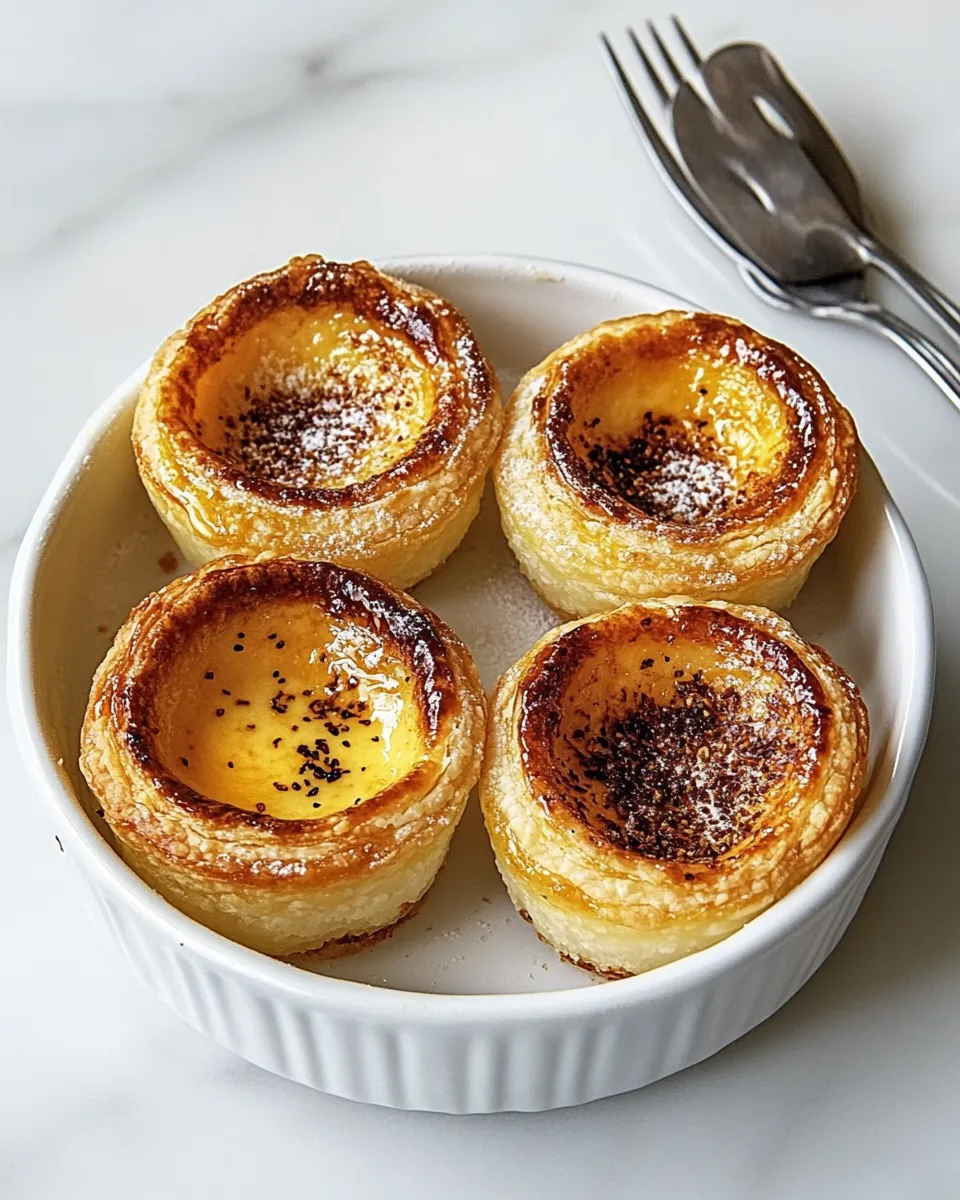
- Milk: Use any plant-based milk like almond or oat milk, but choose unsweetened varieties for best results.
- Vanilla extract: Substitute with a pinch of vanilla powder or omit entirely for a more citrus-forward custard.
- Puff pastry sheet: If unavailable, try phyllo dough layered with a bit of melted butter for a different but delicious texture.
- Lemon zest: Swap with orange zest for a sweeter, milder citrus aroma.
Behind the Recipe
Pastis de Nata (Portuguese Custard Tarts) trace their roots back to Lisbon’s Jerónimos Monastery, where monks originally crafted this sweet treat using leftover egg yolks from winemaking processes. The recipe was later popularized by the Fábrica de Pastéis de Belém bakery, becoming a beloved Portuguese classic. The secret lies in the interplay between the flaky puff pastry and the creamy custard with subtle hints of cinnamon and citrus.
Over the years, this dessert journeyed beyond Portugal, inspiring countless variations but always maintaining its core identity — a perfect custard nestled in a crisp, buttery shell. Making it at home allows you to appreciate the craftsmanship and tradition behind every bite.
Shelf Life & Storage
- Store Pastis de Nata at room temperature for up to 24 hours in an airtight container to maintain pastry crispness.
- For longer storage, refrigerate for up to 3 days, though the pastry will soften; reheat in a hot oven for a few minutes to crisp up before serving.
- These tarts freeze well. Wrap individually in plastic wrap and freeze for up to 1 month. Thaw overnight in the fridge and re-crisp in the oven before eating.
Popular Questions
Can I make Pastis de Nata ahead of time?
Absolutely! You can prepare the custard filling and pastry bases separately and assemble them before baking. The baked tarts can be stored in the fridge for a couple of days and reheated to enjoy fresh flavors.
Why is my custard grainy?
Grainy custard usually means the eggs cooked too quickly or curdled. To avoid this, cook the custard gently over low heat and stir constantly. Adding the warm milk slowly to the egg yolks while whisking helps prevent lumps.
Can I use whole eggs instead of yolks?
While whole eggs can be used, the custard won’t have the same rich texture and vibrant color. Egg yolks give Pastis de Nata their signature creaminess and golden hue.
What’s the best way to achieve the signature burnt spots on top?
High heat is key. Baking the tarts at a hot temperature (around 220°C/430°F) allows the custard surface to caramelize and develop those prized dark spots without burning the pastry.
Reader Favorites
- Sally’s Ultimate Puff Pastry Custard Tarts
- Pinch of Yum’s Classic Portuguese Custard Tarts
- Minimalist Baker’s Simple Portuguese Custard Tarts
- Love & Lemons’ Fresh Pastel de Nata Recipe
Ready, Set, Cook
Now that you’ve got all the ingredients, gear, and know-how, it’s time to dive in and make your own batch of Pastis de Nata (Portuguese Custard Tarts). Remember, the key is patience — both in infusing the custard and in baking at the right temperature to get that perfect caramelized top. Don’t be afraid to experiment with a little extra lemon or cinnamon to match your taste buds. These tarts are guaranteed to wow friends and family, or simply make your day a little sweeter. Happy baking!
When you savor your first bite of these golden little wonders, you’ll understand why Pastis de Nata (Portuguese Custard Tarts) have become such a beloved treat worldwide. Enjoy every flaky, custardy morsel!
Share on Pinterest
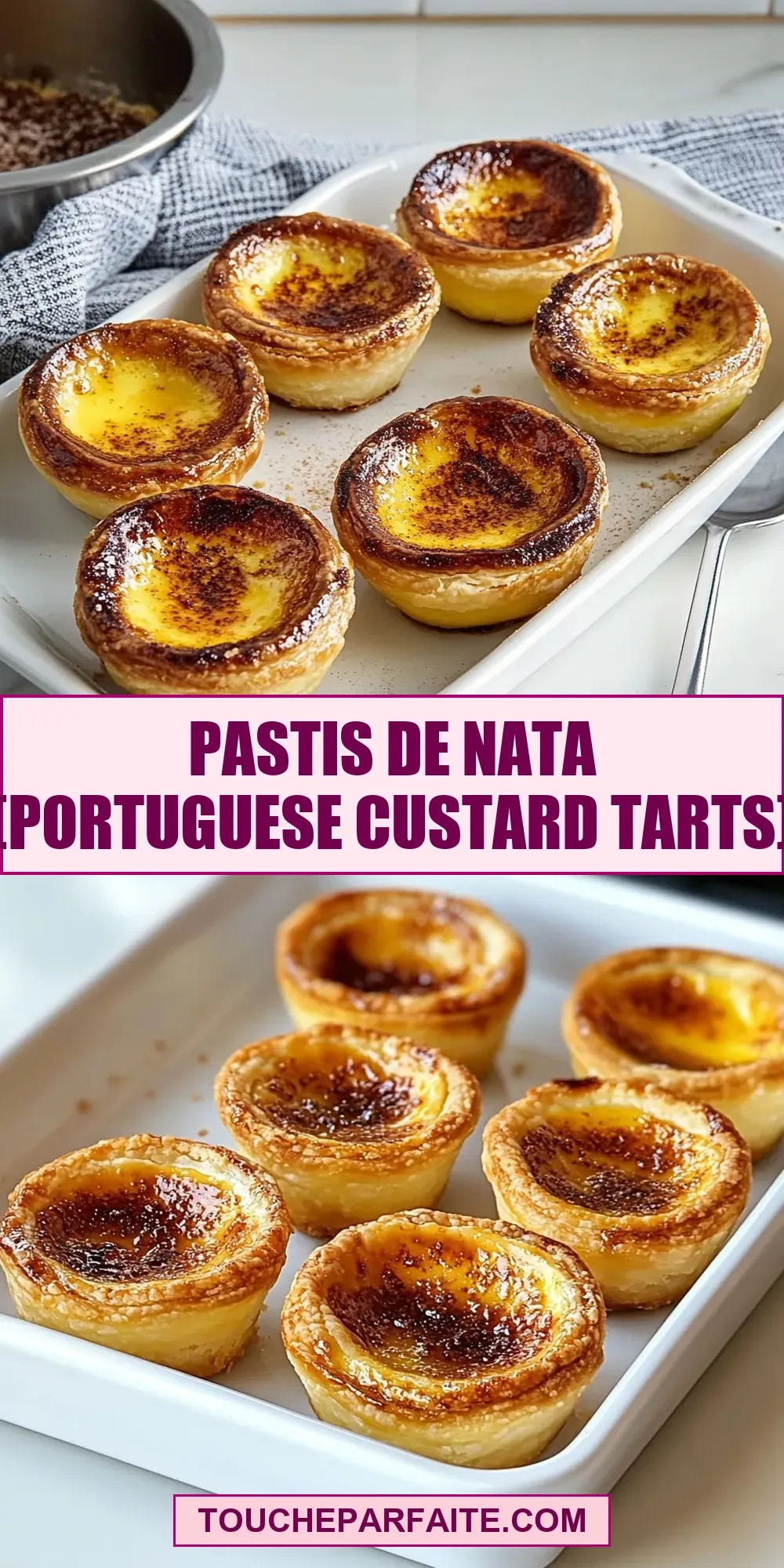

Pastis de Nata (Portuguese Custard Tarts)
Ingredients
Equipment
Method
- Preheat your oven to 220°C (430°F). Lightly grease your muffin tin or tartlet tray with oil. Unroll the sheet of puff pastry onto a lightly floured surface. If needed, gently roll it out to about 3mm thickness. Cut the pastry into circles about 10cm in diameter. Press each circle into the cups, forming little bowls. Refrigerate the tray while preparing custard.
- In a medium saucepan, combine 250g sugar and 85ml water. Stir over medium heat until sugar dissolves. Bring to a gentle boil and cook about 3 minutes without stirring until it thickens slightly. Remove from heat and set aside.
- In another saucepan, pour 350ml milk. Add cinnamon stick and lemon zest. Warm over medium heat until just about to boil, then remove from heat. Let steep for 10 minutes.
- In a mixing bowl, whisk 6 egg yolks until smooth. Gradually add 50g flour and whisk until fully incorporated and lump-free.
- Remove cinnamon stick and lemon zest from milk. Slowly pour warm milk into egg yolk mixture, whisking constantly. Pour mixture back into saucepan. Add sugar syrup and 5ml vanilla extract. Cook over low-medium heat, stirring constantly, until custard thickens in 5–7 minutes. Do not boil. Remove from heat immediately.
- Pour custard evenly into prepared pastry cups, filling about 3/4 full. Bake at 220°C (430°F) for 15–18 minutes until pastry is golden and custard has dark spots.
- Let tarts cool in tin for 5 minutes, then transfer to cooling rack. Serve slightly warm or room temperature. Sprinkle with cinnamon powder or powdered sugar before serving.
Notes
- Store tarts at room temperature up to 24 hours to keep pastry crispness.
- Refrigerate for up to 3 days; reheat in oven to crisp pastry before serving.
- Freeze individually wrapped for up to 1 month; thaw overnight and re-crisp in oven.



